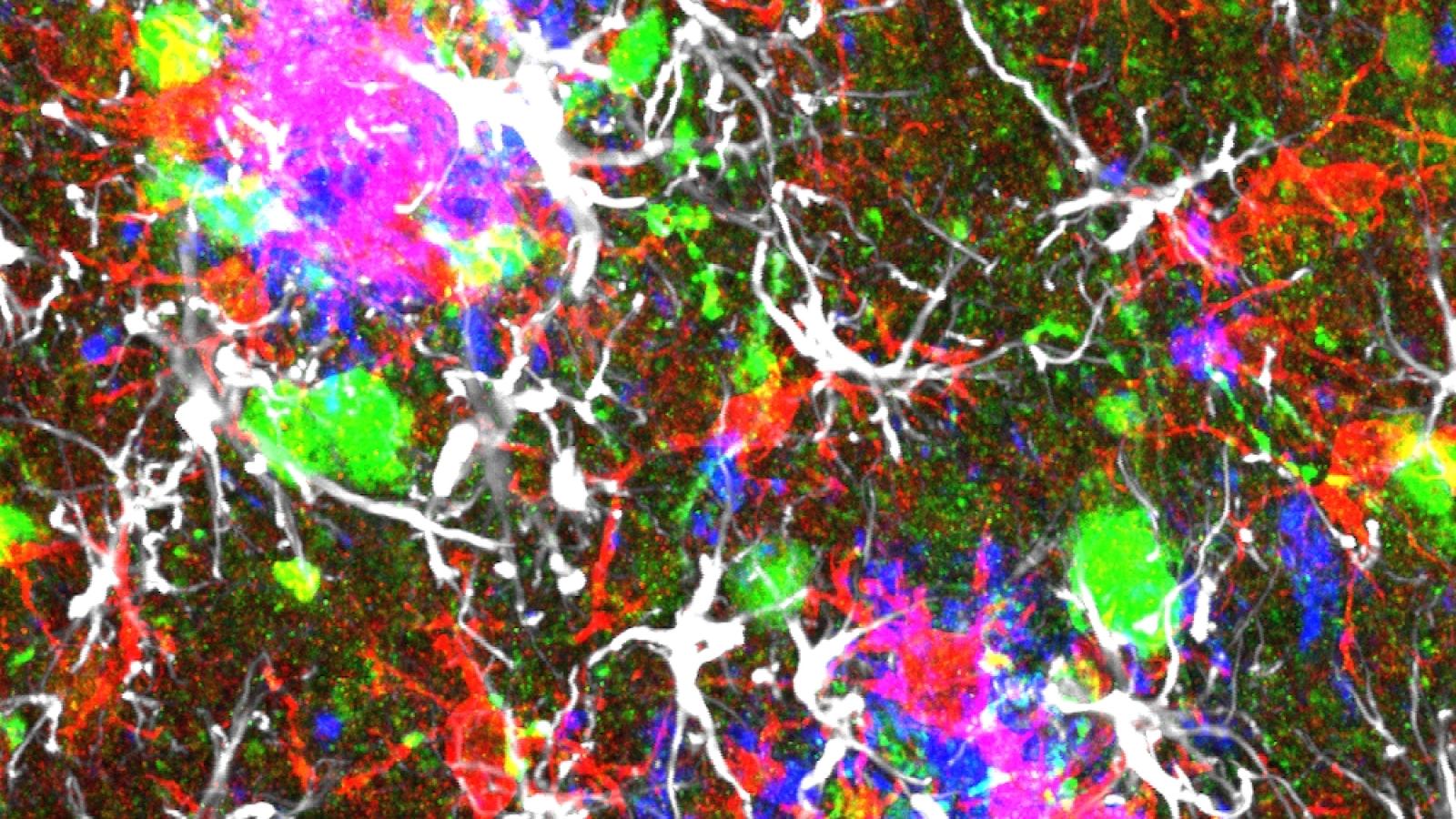A research team led by Prof Bart De Strooper (UK DRI at UCL and VIB-KU Leuven) and Dr Sriram Balusu (VIB-KU Leuven) has finally discovered how neurons die in Alzheimer’s disease. Subject of scientific discussion for the past decades, a breakthrough research paper published in Science illustrates how neurons initiate a programmed form of cell death, known as necroptosis, when they are exposed to amyloid plaques and tau tangles – the hallmark misfolded proteins implicated in Alzheimer’s.
More importantly, the research team was able to prevent the death of neurons, rescuing them in the process. The discovery opens new pathways for potential future treatments.
is implicated in cell death in Alzheimer's
Our study sheds light on the previously murky waters of Alzheimer’s disease, revealing a potential key player in neuronal loss – an RNA gene called MEG3, and the process of necroptosis. These findings are an important step forward in furthering our understanding of the basic mechanisms underlying this complex and often misunderstood disease.Prof Bart De StrooperGroup Leader at the UK DRI at UCL and the VIB-KU Leuven Center for Brain and Disease Research
A new model to crack the Alzheimer’s enigma
One of the key challenges in understanding Alzheimer’s disease (AD) has been connecting its defining hallmarks - amyloid plaques, tau tangles, and death of neurons - to each other. Most mouse models used in research couldn’t naturally replicate these features, leaving scientists with unanswered questions about how they relate to disease progression.
“To bridge this gap, we created a new model,” says Sriram Balusu, postdoctoral researcher in the De Strooper lab and first author of the paper. “We implanted both healthy human and mouse neurons into the brains of AD mouse models. The human cells degenerated much like their counterparts in the human brain, allowing us to study them during brain aging and shine a new light on the processes underlying AD.”
Remarkably, only the human neurons, and not their rodent counterparts, displayed Alzheimer's features seen in the brains of patients, including tau tangles, and significant neuronal cell loss. This suggests that there may be human-specific factors at play in Alzheimer's that standard mouse models can’t replicate. Understanding why mouse neurons are more resilient to amyloid pathology will not only help model the disease better but might also stimulate research into pathways that protect against neurodegeneration.
The culprit behind brain cell loss
Using their new model, the team probed deeper, seeking answers on how neurons die in Alzheimer's. The study revealed a critical breakthrough: a pathway known as necroptosis, a form of programmed cell death, was activated in the model, leading to death of neurons.
But the discovery went even further. The researchers saw that levels of a molecule known as MEG3 were strongly increased in human neurons, as seen in Alzheimer's patients. Strikingly, just the presence of MEG3 alone was enough to trigger the pathway of necroptosis in human neurons in a lab setting. The study also found that by reducing MEG3 and preventing necroptosis, researchers could in turn prevent the death of cells. More research is needed to understand how exactly MEG3 triggers necroptosis, but this discovery represents a crucial advancement in understanding how Alzheimer’s leads to the loss of neurons in the brain.
“Necroptosis is already an active area of drug development in cancer and ALS,” says Prof De Strooper. “While there’s much more to explore, our findings open up promising avenues for potential therapies targeting AD, alongside traditional approaches aimed at amyloid and tau.”
To find out more about Prof Bart De Strooper's research, visit his UK DRI profile. To stay up to date on the latest research news and institute updates, sign up to receive our monthly newsletter, ‘Inside Eye on UK DRI’.
Media coverage
BBC News
Telegraph
Times
Huffington Post
Pharmaphorum
The Sun
Daily Express
Mirror
BBC R4 Today Programme (listen from 01:03:52)
BBC World Service (listen from 14:06)
BBC Scotland (listen from 08:18)
Reference: Sriram Balusu et al., MEG3 activates necroptosis in human neuron xenografts modeling Alzheimer’s disease.Science381,1176-1182(2023).DOI:10.1126/science.abp9556
Article published: 15 September 2023
Banner image: Dr Sriram Balusu
